Dr. Phil Zeltzman’s Blog
Puppy Magic, my biggest ethical dilemma of 2020
Puppy Magic, a now 13 year old Labrador, never knew that he was my biggest ethical dilemma last year. He has a very interesting story and a long journey…
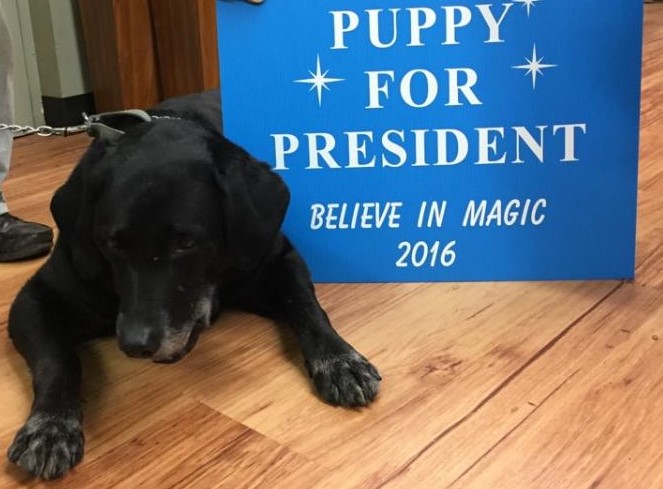
In June of 2019, Puppy Magic had a TPLO to treat a tear of his left ACL. This is my most common surgery by far, so it was supposed to be straightforward. But when a nurse placed a tube in Puppy’s windpipe at the beginning of anesthesia, a mass was noticed in the very back of his mouth. A biopsy of the mass was sent to the lab. The TPLO surgery went well and Puppy went home smoothly.
A week later, the biopsy returned as a malignant melanoma, an aggressive type of cancer.
You could say that it was an accident that the nurse noticed the mass. I firmly believe that it was not. It was found because of the attention to detail and experience of the anesthesia nurse. Not only did she notice the mass, but she alerted her vet who acted on it.
Puppy’s very dedicated owner, thankful that the cancer was caught so early, went to consult with a cancer specialist (oncologist). Incredibly, melanoma can be treated with a vaccine in dogs. Puppy responded well to the treatment and went into remission.
Over a year later, Puppy Magic was taken to the ER because of a limp in the right back leg. A torn ACL was diagnosed – again. In addition, Puppy Magic showed signs of laryngeal paralysis, i.e. difficulty breathing. The ER doctor told the owner that he didn’t recommend addressing the ACL tear or the breathing difficulty in a dog with oral cancer.
When I heard about it, that put me in a very delicate situation.
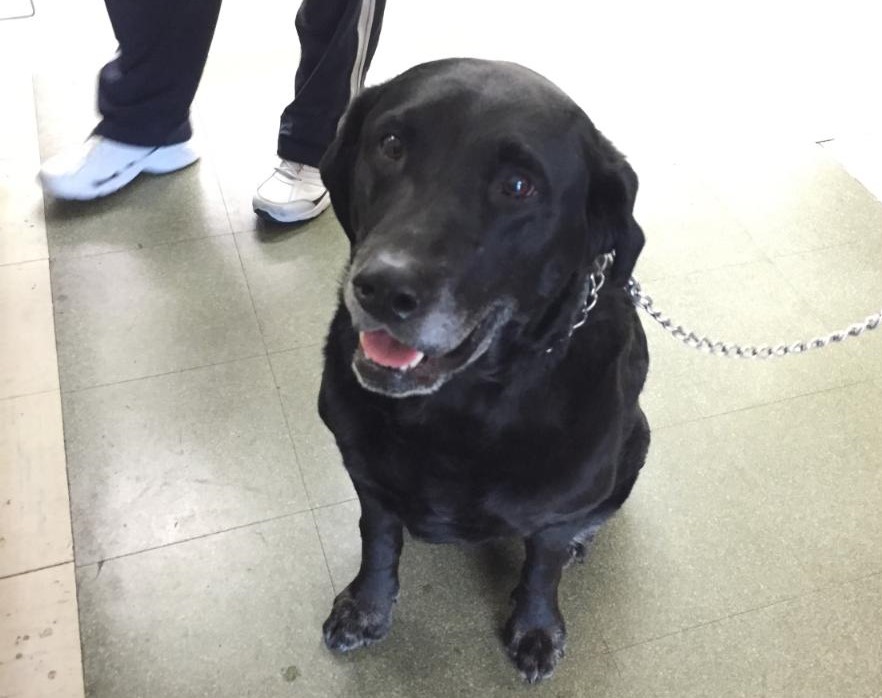
What was I supposed to do?
Say nothing, and allow my patient to suffer from his painful knee, and suffocate because of the laryngeal paralysis?
Or keep my opinion to myself, rather than going against a colleague’s advice?
After a week of mulling over this ethical dilemma, I gathered enough courage to call the owner. I was extremely hesitant. Was this even ethical?
I was convinced that I could help Puppy Magic, but what if something went wrong?
So we had a candid conversation. We discussed the facts. We weighed the pros and the cons. I very clearly explained the possible complications.
In the end, only Puppy Magic’s owner could make the final decision.
The additional difficulty was to decide which surgery to do first: the TPLO or the laryngeal paralysis surgery. Arguments could made either way…
After thinking about it, Puppy’s owner decided to take a chance, and put his dog’s future in my hands…
That’s a lot of pressure…
We eventually both agreed to start with the TPLO.
So in September of 2020, we did another TPLO, this time on the right knee.
Fortunately, thanks to the TLC and dedication of his owner, Puppy recovered smoothly.
Then in December of 2020, we did surgery to treat the laryngeal paralysis.
But wait, there’s more!
During his recovery, Puppy started to limp on the right FRONT leg. His family vet noticed some swelling of one of his toes. Long story short, there was a strong suspicion of cancer.
On the X-ray below, you can see 4 normal toe and 1 very swollen toe on the left (red arrow)…
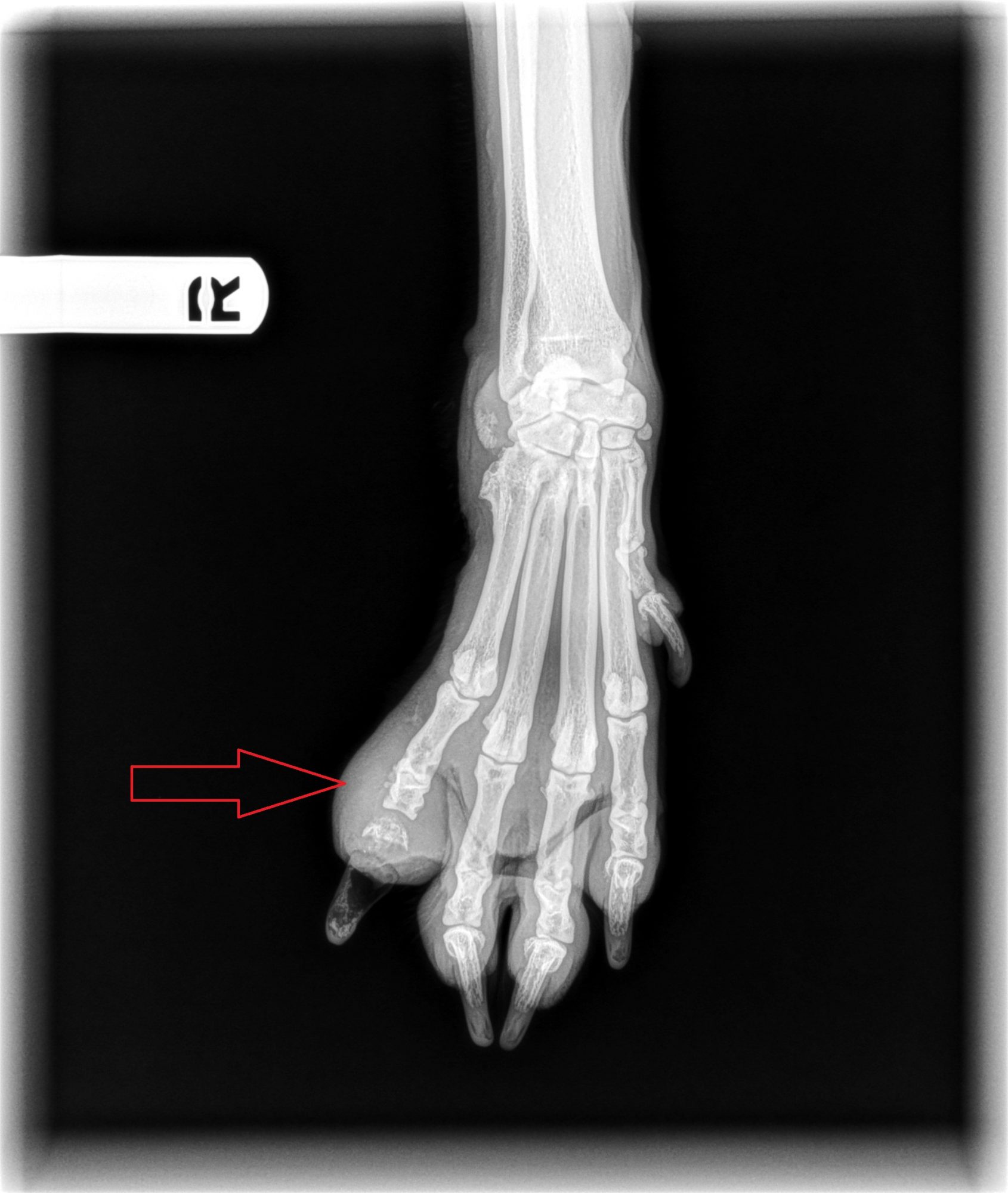
So here we went for yet another dilemma… Was it fair to do surgery? Was it ethical? When do we stop? What would you have done?
Again, Puppy Magic’s owner decided to give his pup a chance, and chose to go to surgery.
So, even though the clinic was in the middle of a giant snowstorm, we performed surgery to treat the laryngeal paralysis and amputated the toe.
Laryngeal paralysis causes difficult and noisy breathing.
The very next day after surgery, not quite used to the new situation, the owner wrote: “Breathing is good. I have to check Puppy’s stomach to see if he is breathing!”
That certainly was a good start!
One week after surgery: “He is walking much better – he has not walked this well in over 5 months.”
In addition, “Puppy is doing some good things he has not done in a while – like going into the kitchen to eat. His foot hurt too much before to do that.”
It’s the little things…
Sadly, 10 days after surgery, the diagnosis of cancer in the toe (squamous cell carcinoma) was confirmed. Fortunately, the cancer was removed 100%.
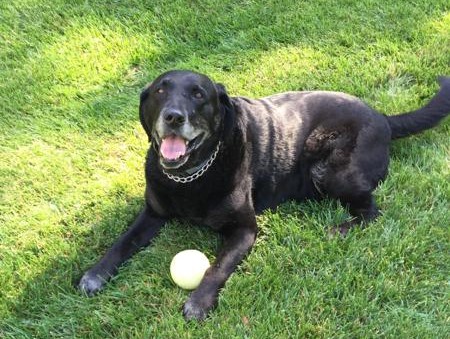
Two months after surgery, Puppy was finally done with healing. He was breathing well, wagging his tail, eating and drinking well, playful, eager to go on walks, and happy to be alive.
His owner concludes: “Puppy is doing great after his 4 surgeries. He has a great love of life and enjoys each moment.”
This story shows that when a family vet, a surgeon and a unusually dedicated pet owner work together, have open communication and trust each other, tricky situations, including cancer, can have a good outcome.
As of this writing, 6 months after his 4th surgery, Puppy Magic is still doing great.
Phil Zeltzman, DVM, DACVS, CVJ, Dear Free Certified

Dr. Phil Zeltzman is a traveling veterinary surgeon in Pennsylvania & New Jersey. An award-winning author, he loves to share his adventures in practice along with information about vet medicine and surgery that can really help your pets. Dr. Zeltzman specializes in orthopedic, neurologic, cancer, and soft tissue surgeries for dogs, cats, and small exotics. By working with local family vets, he offers the best surgical care, safest anesthesia, and utmost pain management to all his patients. Sign up to get an email when he updates his blog, and follow him on Facebook, too!
You removed how much of Mimi’s jaw???
Mimi, a cute 9 year old miniature poodle, started to bleed from the left side of the mouth.
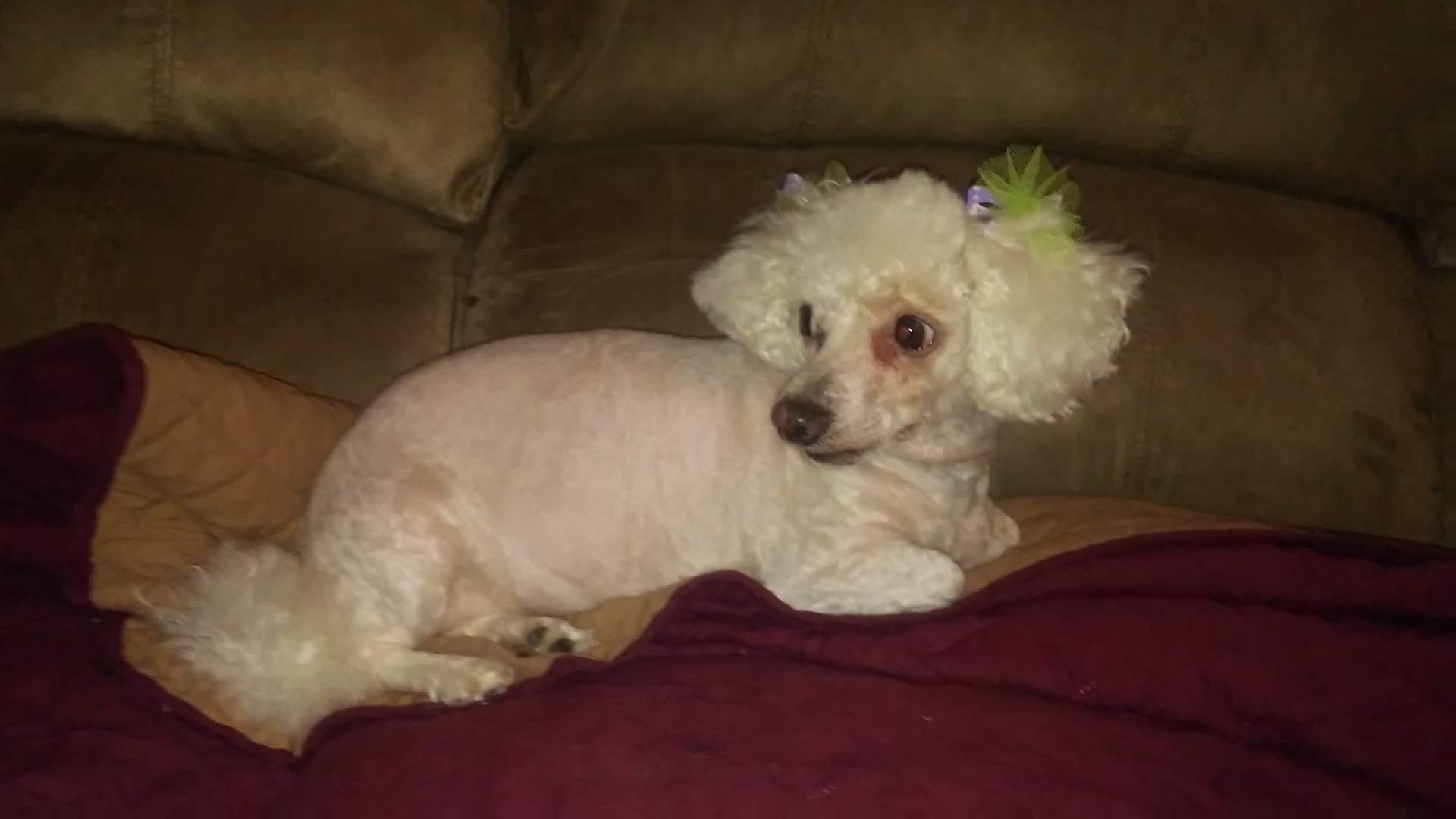
Initially, it was on and off, nothing scary. Then she started to drool after eating and drinking. Sometimes, the saliva was mixed with blood. When the bleeding became consistent, Mimi’s owner went to her family vet.
The conclusion was shocking: Mimi had a tumor in her left lower jaw bone (mandible). Her vet took X-rays (below), which showed that the front of the left lower jaw bone was eaten away by an aggressive tumor, which the back section of the jaw showed a growing tumor.
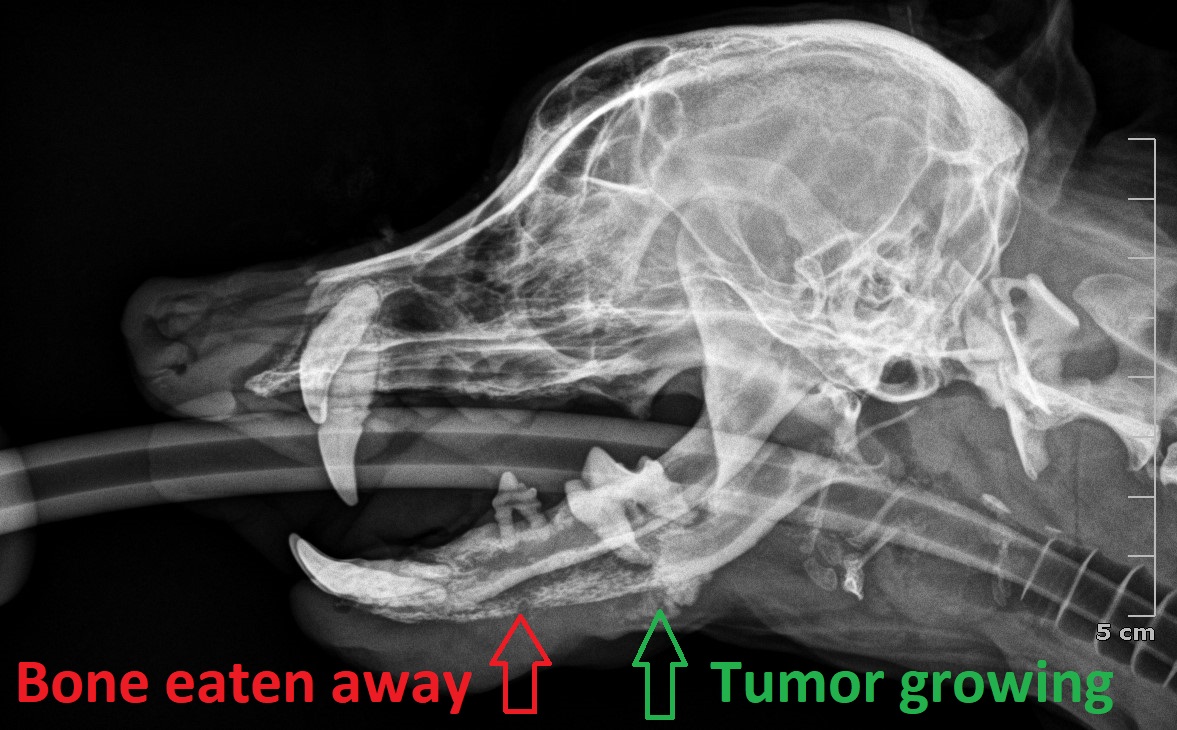
WHAT FOLLOWS IS GRAPHIC, SO YOU MAY WANT TO STOP READING IF YOU ARE A SENSITIVE SOUL.
Mimi was referred for surgery. It is necessarily invasive, because you can’t remove the mass only. The tumor was in the jaw, so part of the jaw, including the teeth, had to be removed. Removing part of the lower jaw or mandible is called a partial mandibulectomy. As drastic as it sounds, dogs look fairly good after this surgery. More importantly, they’re finally comfortable once the mass is removed.
Mimi’s owner drove all the way from from New York City to Harrisburg Regional Vet Surgical Specialty ( www.HRVSS.com ).
I had a long heart to heart with Mimi’s owner, trying to explain (along with pictures) how Mimi would look like after surgery. I kept saying: “It’s not for everybody.”
All Mimi’s owner wanted is to help her dog get comfortable.
On exam, it appeared that the mass had grown so much, that it had invaded the front of the jaw and extended to the right half of the mandible.
Now, that was a whole different story. Almost ALL of the mandible had to be removed. This is called a radical mandibulectomy. This is much more invasive and cosmetically dramatic.
I called Mimi’s owner and we had another heart-to-heart discussion. Again, I said: “It’s not for everybody.”
But Mimi’s owner was committed to doing anything to help her dog, knowing the possible risks and complications. So we proceeded with surgery.
Actually, before an invasive surgery, we needed to make sure the tumor had no spread to the lung (see X-ray below), which fortunately it had not.
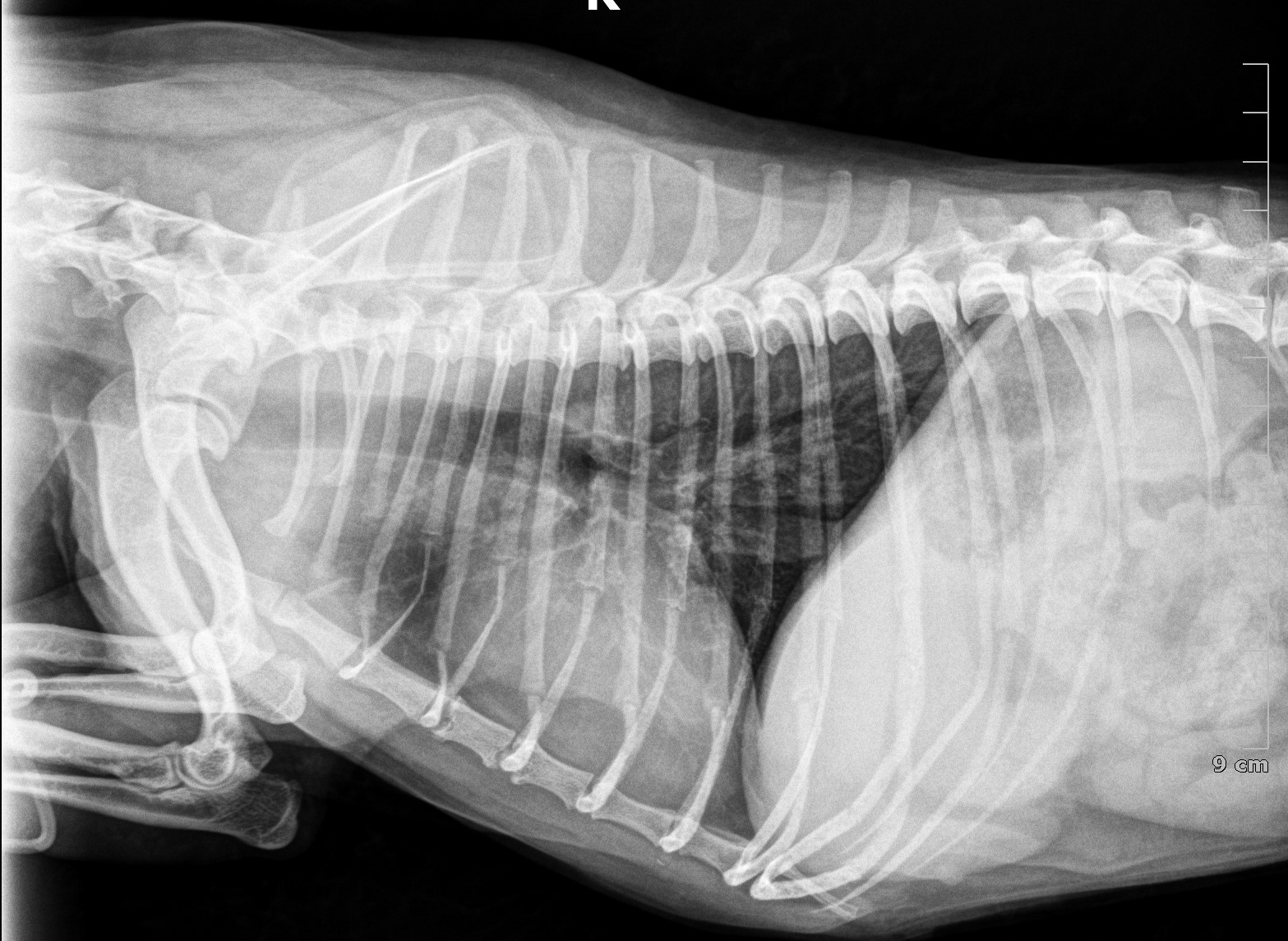
YOU HAVE BEEN WARNED, WHAT FOLLOWS IS NOT FOR THE FAINT OF HEART.
Surgery was uneventful. About 95% of the lower jaw was removed with no complications. Mimi recovered smoothly from anesthesia. She was kept overnight in the hospital, where she was monitored by a nurse, and received plenty of TLC.
Thanks to multiple types of pain medications given before, during and after surgery, she seemed very comfortable. So comfortable, that she ate 4 times that night!
Of course, she had to relearn how to eat, so things were a bit messy as you can see in the picture below.
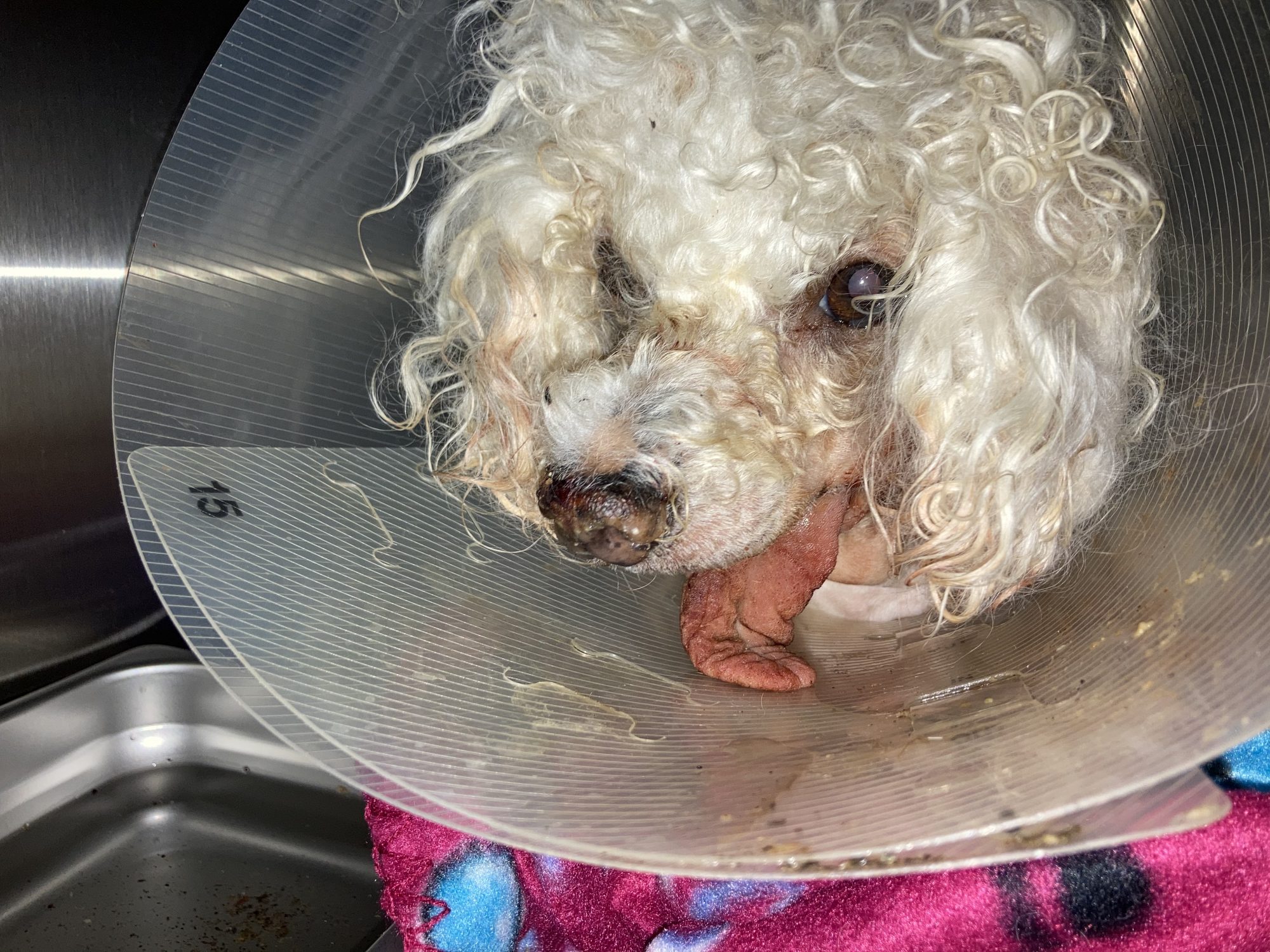
Mimi was discharged the very next morning.
The jaw was sent out to the lab for evaluation. The tumor was a squamous cell carcinoma, one of the most common types of cancer in the mouth (in cats and dogs).
Fortunately, the lab confirmed that we “got it all.”
Since surgery, Mimi has been home, where her owner took exceptionally good care of her.
Clearly, this surgery is not for everybody. It requires a very dedicated and loving pet owner who is willing to assist their pet with eating and drinking as needed, and who can get over the cosmetic appearance of their pet without judgment.
With modern surgery and generous pain medications, most pets do very well after invasive surgery, including removing a large part of the jaw.
Phil Zeltzman, DVM, DACVS, CVJ, Fear Free Certified

Dr. Phil Zeltzman is a traveling veterinary surgeon in Pennsylvania & New Jersey. An award-winning author, he loves to share his adventures in practice along with information about vet medicine and surgery that can really help your pets. Dr. Zeltzman specializes in orthopedic, neurologic, cancer, and soft tissue surgeries for dogs, cats, and small exotics. By working with local family vets, he offers the best surgical care, safest anesthesia, and utmost pain management to all his patients. Sign up to get an email when he updates his blog, and follow him on Facebook, too!

